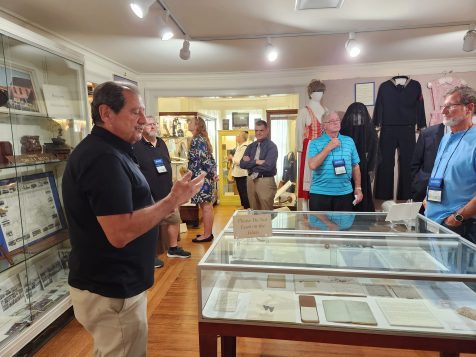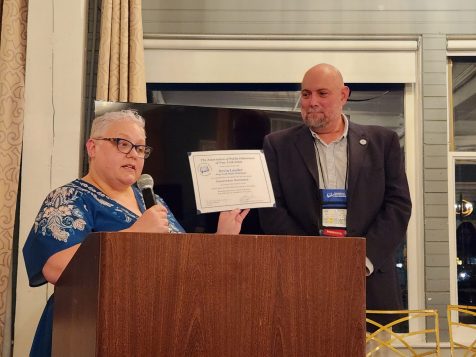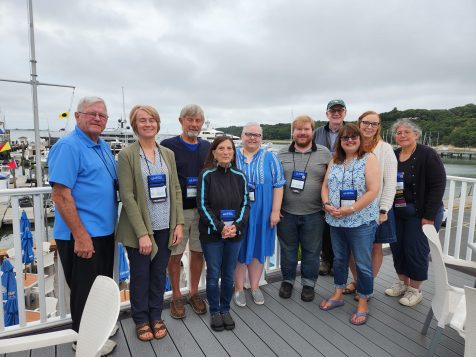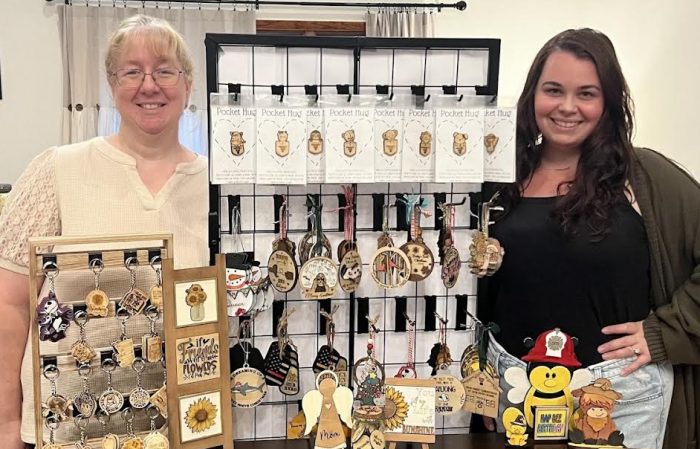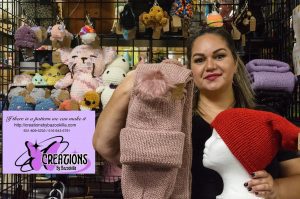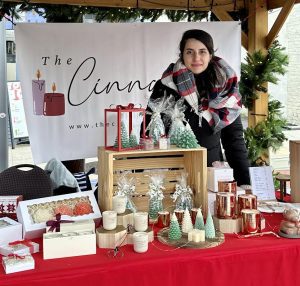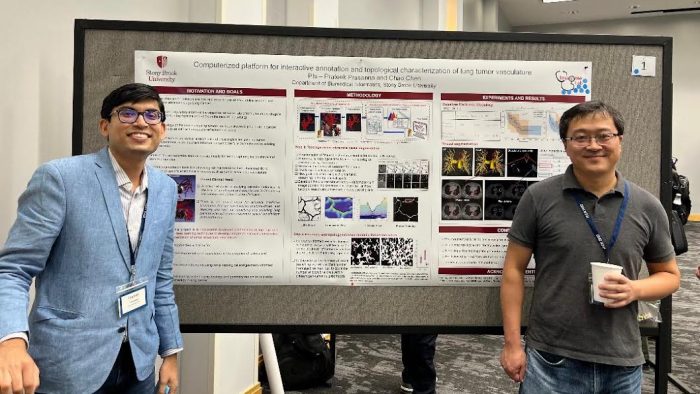By Daniel Dunaief
Cancer often involves numerous small changes before it become a full blown disease. Some of these alterations are structural, as otherwise healthy cells make subtle shifts that favor out of control growth that often defies the immune system and threatens the health of tissues, organs and the entire body.
Associate Professor Chao Chen and Assistant Professor Prateek Prasanna, both in the Department of Biomedical Informatics at Stony Brook University, recently received a four-year, $1.2 million grant from the National Cancer Institute to continue to develop an enhanced breast cancer imaging tool that could detect some of those changes.
Using advanced mathematical modeling and machine learning and working with clinical collaborators in radiology, radiation oncology, surgery and pathology, the researchers are developing a tool called TopoQuant. They hope they can provide a way to look at the changes in tissue architecture that occur during the growth and development of cancer and during radiation treatment.
Receiving the grant means “other researchers also think highly about the subject,” Chen explained. “This further boosts our confidence and is an approval for our effort so far.”
By combining two-dimensional and three-dimensional data, the Stony Brook researchers, including radiation oncologist Dr. Alexander Stessin, hope to provide an analytical tool that helps doctors and patients confronting cancer all the way from the early steps the disease takes to the ways it resists various treatments.
The researchers are using tomosynthesis and MRIs, both of which are three dimensional, and conventional mammographs, which are two dimensional.
Stessin will work closely to evaluate the efficacy of the TopoQuant framework to provide a predictive and useful interpretation of breast images.
The diagnostic and prognostic tool these scientists are developing has potential applications outside the world of breast cancer. The deep learning technique could help analyze images and information for other types of cancer as well as for various neurological challenges.
“In the tools we develop, a lot of the algorithms are domain agnostic,” said Prasanna.
The approach should work as long as the researchers can get structure-rich imaging data. To be sure, while this approach has had some promising early results, it has to proceed through numerous steps to help in the clinic.
In the meantime, the researchers plan to use the funds, which will support salaries and travel budgets for researchers, to continue to develop TopoQuant.
Chen and Prasanna envision providing physicians with an explanation of why artificial intelligence is guiding them towards a particular decision.
Doctors could “place more trust in a system like this,” Prasanna said. “It lends interpretability to an analysis that is typically more opaque.”
Healthy cells
When health care technicians gather information about breast cells, they often focus on developments in and around the cancer cells.
“The premise of the work” Chen and Prasanna are doing is to look at signals “even in the normal [healthy] areas of the breast, Prasanna said. “It’s important for physicians to look at these normal areas before they begin any treatment. What our tool lets them do is extract these signals.”
The process of developing this tool started about five years ago, as the scientists shared ideas and did preliminary studies. The work became more involved and detailed around 2020.
“The challenge is to have a harmonic combination between mathematical modeling and deep learning,” Chen explained. “Incorporating principled math modeling into deep learning is important yet not trivial.”
In their work, the researchers used phantom data called VICTRE from the Food and Drug Administration. They used simulated magnetic resonance images and validated that the method can extract the tissue structure faithfully across different breast density types. They are also using data from The Cancer Imaging Archive for initial model development.
At this point, the researchers have some evidence that the alpha version of the tool has been “promising” in the context of neoadjuvant chemotherapy, which they demonstrated in a paper they published in 2021.
The results from that study indicated different topological behavior of breast tissue characterized by patients who had different responses to therapy.
The researchers plan to continue to establish that the tools are properly characterizing what is happening. After that, they will validate the effort with a Stony Brook University Hospital cohort.
Clinicians from Rutgers are working with Chen and Prasanna and will do additional testing through external data sets.
Complementary skills
Chen and Prasanna, who have joint lab meetings and discuss their research every week, work in different parts of the campus. Chen’s lab is on the west campus, while Prasanna is in the east campus.
The researchers have combined their interests and skill sets to apply a computer science driven approach to medicine and the field of bioimaging analysis.
Chen does considerable work with topological information and machine learning. Prasanna, meanwhile, is also involved in the clinical world, combining his passions for engineering and medicine.
A native of Gansu Province in China, Chen lives near New York City and commutes to the university two or three times per week, working the other days from home and meeting with students and collaborators by Zoom.
When he first joined Stony Brook in 2018, Chen was concerned about jumping into a different department.
After visiting the department and speaking with Chair Joel Saltz and other faculty, he developed greater confidence when he learned of their passion for research, their research philosophy and the chemistry within the department.
Six years later, he thinks it was “the best career decision” he made.
A native of Cuttack, India, Prasanna and his wife Shubham Jain, who is in the faculty of Computer Science at Stony Brook, have worked together professionally.
The couple enjoys hiking and has been to 47 of the 63 national parks. One of their favorite parks is Katmai National Park and Preserve in Alaska.
Prasanna’s father’s family includes many physicians and his mother’s is involved in engineering. In his career, he has combined the professional focus from both sides of his family.
Early in his career, Prasanna worked on a project that used a smart phone to obtain fundus images of the eye to predict diabetic retinopathy.
At the time, he thought “this is where I want to be,” he recalled.




